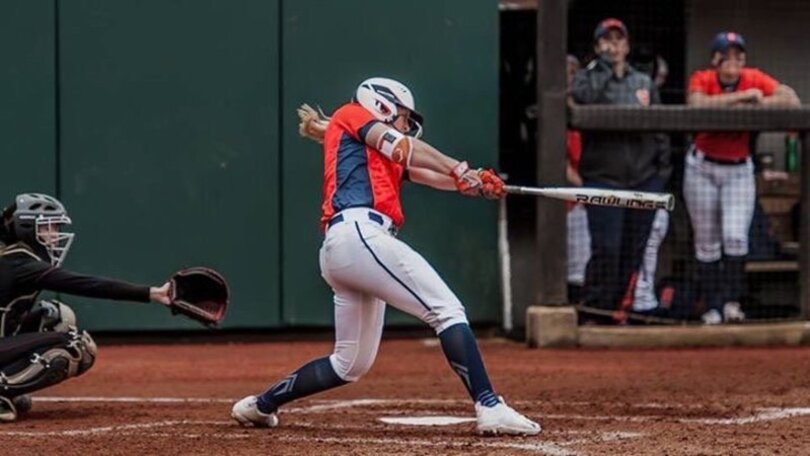Left-handed batters are fueling Syracuse’s offense

Sydney O'Hara is the Orange's best hitter as a lefty. She also pitches righty, so she knows the challenges that most pitchers have against lefties. Courtesy of SU Athletics
Syracuse first baseman Sydney O’Hara swung on a pitch low and inside, getting the barrel of the bat out ahead, and pulling the ball deep over the right fielder’s head. O’Hara watched the ball clear the fence for the fourth time that evening.
“A lot of pitchers don’t know how to throw to lefties,” O’Hara said. “Teams don’t know what to do.”
Left-handed hitters have been the difference maker for Syracuse (26-17, 7-10 Atlantic Coast Conference) this season. Three of the top four team leaders in batting average are all lefties: first O’Hara (.477), second Bryce Holmgren (.376) and fourth Sammy Fernandez (.352). The three also come at the top of the order, batting third, fourth and first respectively. They account for at least 38 percent of the team’s hits, runs, doubles, triples, home runs, RBIs and total bases.
O’Hara is also a right-handed pitcher for the Orange, and leads the nation in saves. She knows that pitching to lefties can be a daunting task.
An advantage for Syracuse with four left-handed hitters — utility player Kelsey Johnson joins O’Hara, Holmgren and Fernandez — in its current regular starting lineup is that most softball teams don’t have a left-handed pitcher. And righties struggle more against left-handed hitters than southpaw pitchers do.
Righties typically love to throw curveballs, O’Hara said, and that’s normally their dominant pitch. But against lefties, the curveball spins to the inside corner rather than the outside, like it does against righties. For dominant lefty hitters who pull pitches like O’Hara, Fernandez and Holmgren, that translates into pitches for their sweet spot.
“Hitting off of any righty, it’s just easier to see the ball,” Fernandez said. “Lefty on lefty is always a tough matchup.”
Screwballs have the opposite effect. They travel away from lefties going to the opposite corner. But because most pitchers and hitters are righties, a screwball would go inside on righties and allow those hitters to pull the ball. Fewer pitchers throw screwballs for that reason, O’Hara said.
For Fernandez, who doesn’t have the same power as Holmgren and O’Hara, being a lefty allows her to keep the defense guessing.
“It’s definitely an advantage, the defense not knowing what I’m going to do,” Fernandez said. “I can lay down a bunt, whether to third or drag bunt, soft-slap, power-slap and I can swing away.”
Assistant coach Alisa Goler has compared Fernandez to Ichiro Suzuki in the way she leads into her swing and gets ahead of the ball. Her speed on the bases as a lefty allows her to beat out throws, even on grounders to second base.
Bosch sees the difference that lefties can make in the lineup, and it certainly comes into his mind when recruiting.
“If it’s an option between A and B, and B happens to be a lefty,” Bosch said, “we might give a little more preference there.”
One of the Orange’s advantages during practice is that it has a lefty pitcher in freshman Alexa Romero.
The coaches have Romero pitch frequently to the lefties to work on their hitting and vision on the outside corners, Fernandez said. The junior leadoff hitter loves pitches high and away, but not all left-handed hitters do, so Romero gets them adjusted to when righties force pitches to the outside, or for when they do run into lefty pitchers.
Whether it has been against righties or lefties this year, SU’s lefty batters have assembled a dominant campaign that has translated to team’s best performances in years, including a win last Saturday against North Carolina, the second-best team in the ACC.
“They add something different to the dynamic of your hitting lineup,” Bosch said. “If you can have a number of them in your lineup, it’s an advantage.”




